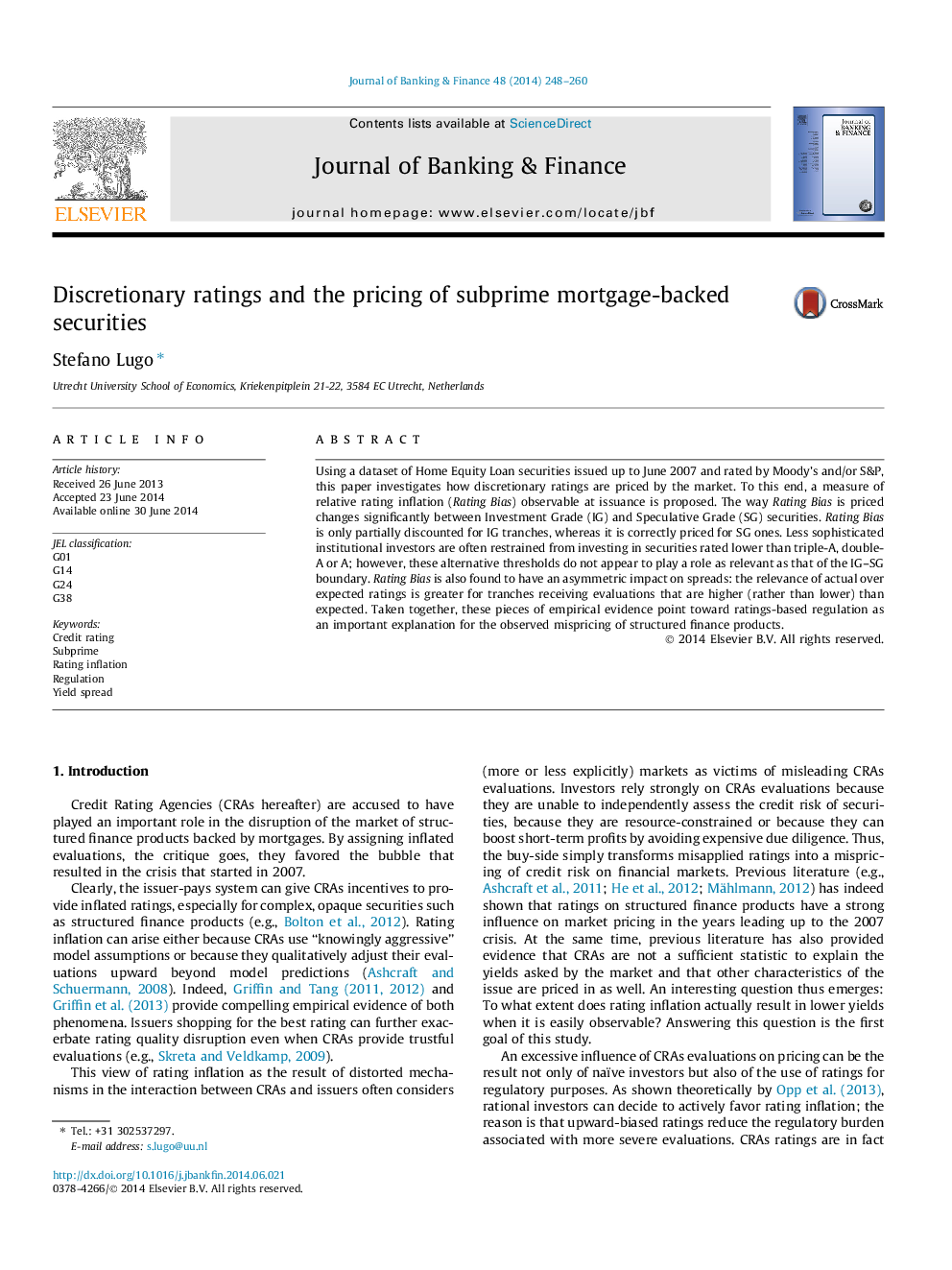| Article ID | Journal | Published Year | Pages | File Type |
|---|---|---|---|---|
| 5088791 | Journal of Banking & Finance | 2014 | 13 Pages |
Abstract
Using a dataset of Home Equity Loan securities issued up to June 2007 and rated by Moody's and/or S&P, this paper investigates how discretionary ratings are priced by the market. To this end, a measure of relative rating inflation (Rating Bias) observable at issuance is proposed. The way Rating Bias is priced changes significantly between Investment Grade (IG) and Speculative Grade (SG) securities. Rating Bias is only partially discounted for IG tranches, whereas it is correctly priced for SG ones. Less sophisticated institutional investors are often restrained from investing in securities rated lower than triple-A, double-A or A; however, these alternative thresholds do not appear to play a role as relevant as that of the IG-SG boundary. Rating Bias is also found to have an asymmetric impact on spreads: the relevance of actual over expected ratings is greater for tranches receiving evaluations that are higher (rather than lower) than expected. Taken together, these pieces of empirical evidence point toward ratings-based regulation as an important explanation for the observed mispricing of structured finance products.
Related Topics
Social Sciences and Humanities
Economics, Econometrics and Finance
Economics and Econometrics
Authors
Stefano Lugo,
